N-class: Difference between revisions
Pbcjohnston (talk | contribs) →Design, Construction, and Naming Notes: Added additional info |
Pbcjohnston (talk | contribs) |
||
| Line 7: | Line 7: | ||
<div style="text-align: justify;"><span style="color:#00008B">The N-class submarines were authorized in Fiscal Year 1915 appropriations. The congressional budget committee, in order to be able to afford a fleet submarine (later to be the [[T-class|'''T-class''']]) in that year's appropriations, ''reduced'' the amount of money available for coastal submarines by over $100,000 per unit. This dictated that the FY-15 coastal submarines be smaller, and thus the N-class was born. They were essentially "modernized" [[H-class|'''H-boats''']] These boats were over 100 tons smaller than the preceding L-class and would be the smallest submarines built for the USN from this point until 1952. As usual, the Navy split the order of seven boats between Electric Boat and Lake. EB would get N-1 through N-3 and these would be built in Seattle by Todd Dry Dock & Construction Company. Lake would build N-4 through N-7 at his yard in Bridgeport, CT. Since the design of the EB units were based heavily on the H-class, EB reverted to the rotating bow cap for the outer doors of the torpedo tubes of that earlier design. | <div style="text-align: justify;"><span style="color:#00008B">The N-class submarines were authorized in Fiscal Year 1915 appropriations. The congressional budget committee, in order to be able to afford a fleet submarine (later to be the [[T-class|'''T-class''']]) in that year's appropriations, ''reduced'' the amount of money available for coastal submarines by over $100,000 per unit. This dictated that the FY-15 coastal submarines be smaller, and thus the N-class was born. They were essentially "modernized" [[H-class|'''H-boats''']] These boats were over 100 tons smaller than the preceding L-class and would be the smallest submarines built for the USN from this point until 1952. As usual, the Navy split the order of seven boats between Electric Boat and Lake. EB would get N-1 through N-3 and these would be built in Seattle by Todd Dry Dock & Construction Company. Lake would build N-4 through N-7 at his yard in Bridgeport, CT. Since the design of the EB units were based heavily on the H-class, EB reverted to the rotating bow cap for the outer doors of the torpedo tubes of that earlier design. | ||
They conducted brief anti U-boat patrols off the New England coast in WWI, and then served in a training role out of New London until they were decommissioned. Overall, these boats ended up being too small to be really useful, with the EB versions averaging only 8.5 years of service. The Lake versions seemed to have been particularly disliked for poor detail design, habitability, and overall unreliability. They were discarded after only 3.5 years of service in the early 1920's. | They conducted brief anti U-boat patrols off the New England coast in WWI, and then served in a training role out of New London until they were decommissioned. Overall, these boats ended up being too small to be really useful, with the EB versions averaging only 8.5 years of service. The Lake versions seemed to have been particularly disliked for poor detail design, habitability, and overall unreliability. They were discarded after only 3.5 years of service in the early 1920's. However, the Busch-Sulzer 6M50 diesels of the Lake N's were well liked. The engines from N-4, N-5, and N-7 were removed and installed on three of the EB design L-boats, as their engines were worn out by 1923.</span> | ||
[[File:Red bar sub new.jpg]] | [[File:Red bar sub new.jpg]] | ||
Revision as of 12:19, 9 March 2025
Design, Construction, and Naming Notes
They conducted brief anti U-boat patrols off the New England coast in WWI, and then served in a training role out of New London until they were decommissioned. Overall, these boats ended up being too small to be really useful, with the EB versions averaging only 8.5 years of service. The Lake versions seemed to have been particularly disliked for poor detail design, habitability, and overall unreliability. They were discarded after only 3.5 years of service in the early 1920's. However, the Busch-Sulzer 6M50 diesels of the Lake N's were well liked. The engines from N-4, N-5, and N-7 were removed and installed on three of the EB design L-boats, as their engines were worn out by 1923.
N-1 (Submarine No. 53, later SS-53)
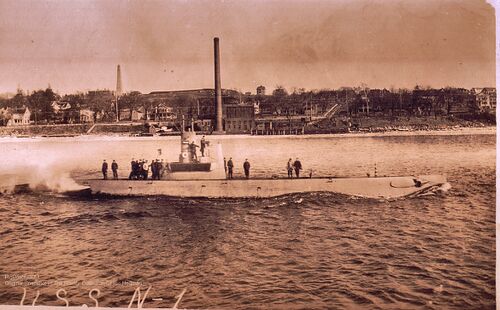
Behind, on the shore, can be seen the Fort Griswold Monument and Fort Griswold itself, to the left of the large smoke stack. Fort Griswold is a revolutionary war fort that was the scene of a bloody massacre by the British on American forces. Survivors were taken from the fort and placed on prison ships moored in the Thames River.
The building with the large smokestack is yet to be identified. It is north, or upriver from the present location of the Electric Boat Company where submarines are still built.N-2 (Submarine No. 54, later SS-54)
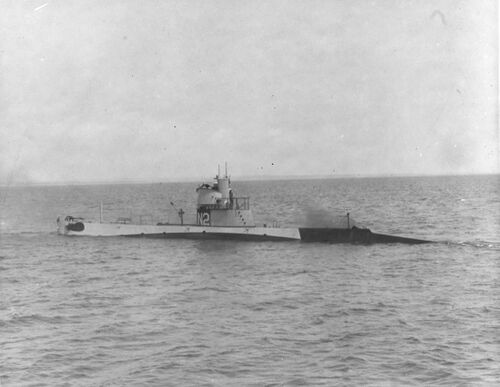
N-3 (Submarine No. 55, later SS-55)
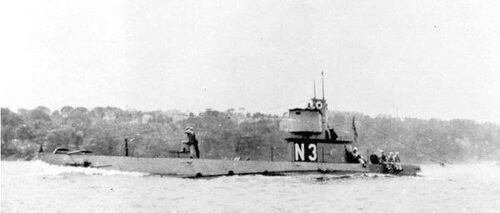
N-4 (Submarine No. 56, later SS-56)
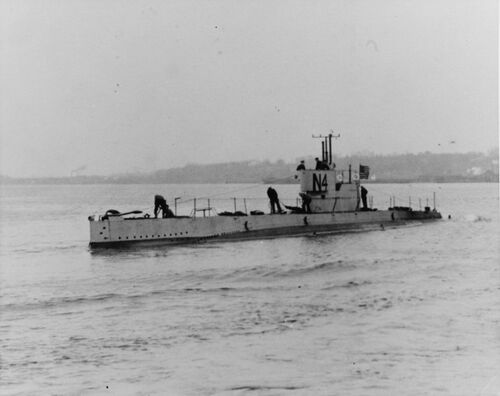
N-5 (Submarine No. 57, later SS-57)
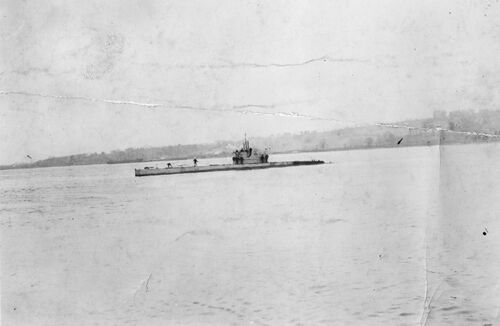
N-6 (Submarine No. 58, later SS-58)
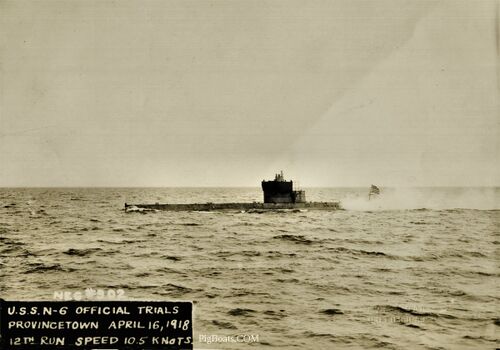
N-7 (Submarine No. 59, later SS-59)
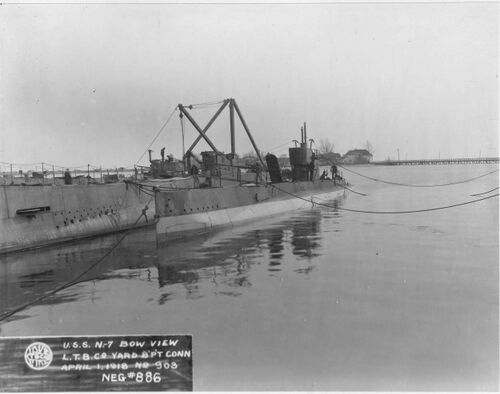
General N-class and group photos
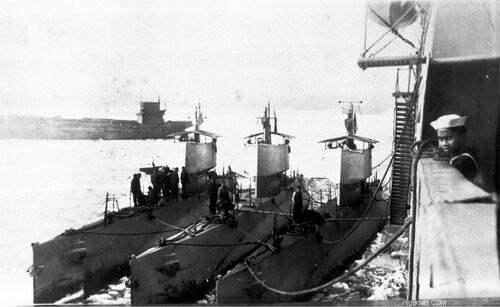
See more general N-class photos
Page created by:
Ric Hedman & David Johnston
1999 - 2023 - PigBoats.COM©
Mountlake Terrace, WA, Norfolk, VA
webmaster at pigboats dot com
